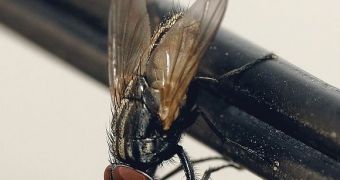Researchers from the US Department of Agriculture (USDA) have applied for a new patent, which deals with the creation of a smell-free fly trap. The application says that the trap carries no smell of its own that can be detected by humans, but that flies such as the common house fly (Musca Domestica) are irresistibly drawn to it, and succumb to the trap. If their patent is approved, this could very well be the end of this nuisance, which can be found in most households on all continents, with the exception of the Antarctic, where the fly would freeze to death.
But seeing how we don't live in giant refrigerators, it's a slim chance that the flies will just go away on their own. And the alternative to the new device, old traps employing rotten meat or similar substances, is not exactly to be preferred either, seeing how the stench can become unbearable even to the strongest of noses. And no one would like to have their guests complaining about the fact that the living room smells of dead animals.
That's exactly the kind of issues that Uli Bernier and his colleagues from the Agricultural Research Service at USDA are trying to address with their new product. Basically, the scent that flies are attracted to comes from naturally-occurring acids, which can also be found in rotten foods that Musca Domestica usually hovers over.
In tests they have conducted in the lab, the researchers have learned that traps set with the new substances are 12 times more likely to attract flies than decoys using only water. The kill rate nears 100 percent, and the stuff is really easy to make, the team says. Because the new solution is water-based, its manufacturing costs will be fairly small, the team argues, which means that it could be very affordable to people with less money.
In addition, the revolutionary solution will not feature any of the solvents regularly used in such traps, meaning that fire hazard is very reduced. In the patent application, the researchers maintain that the substance could also be made in an aerosol, meaning that people would be able to spray surfaces that they know flies gather on, for a maximum effect.

 14 DAY TRIAL //
14 DAY TRIAL //